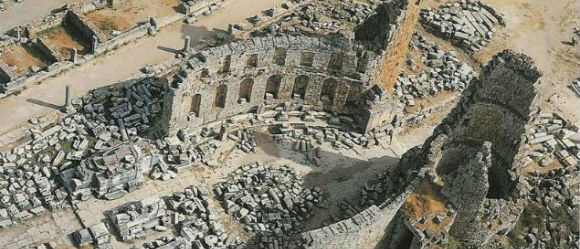The area of Attalia (modern Antalya) is one of the most beautiful in all Turkey. It sits on sheer cliffs above the blue Mediterranean with a green plateau stretching behind the city to magnificent pine forests. To the west great mountains rise straight out of the sea.
The city was founded in the second century B.C. by Attalus II, the king of Pergamon, and was named for him. It replaced Side as the main port for the area. Side has always been exposed to all the storms on the Mediterranean; safe entrance to it was the occasion for great rejoicing both by those on board ship and those on land. Thus Attalia quickly became the commercial center of the Gulf as it had the better natural harbor.
Plutarch, in telling about Pompey’s campaign against the Cilician pirates in the first century B.C., reports that the pirates observed certain secret rites including those of Mithras in Olympus just west of Attalia on the Gulf. This fire worship may well have been in connection with the natural fire known as the Chimera that has burned on a hillside there for centuries and is still visible at night from the sea.
Attalia is not named when Paul and Barnabas and Barnabas’s cousin, John Mark, went from Paphos to Perga on their first journey (Acts 13:13), but either Side or Attalia would have been possible ports. Or they may have sailed straight to the Perga wharf on the Cestrus (Aksu River). On their way back from Iconium they came through Perga and sailed from Attalia to Antioch. No other mention is made of Attalia in the Bible, nor is there any comment about Paul’s missionary work there.
Some evidences of early Christianity are still to be seen in Antalya. The archeological museum in the city formerly was in the ruins of the thirteenth century Sel-cuk mosque of Ala-ud-din Kaikubad I. (It now has moved to a new building.) In common with many other buildings around the Mediterranean the mosque was previously a Byzantine basilica built in the seventh century A.D. using second century B.C. materials. The museum houses some sarcophagi from Perga and a casket of bones reputed to be those of St. Nicholas (see the comments under Myra). Both the Great Mosque (Ulu Cami) and Kesik Minare Mosque were Byzantine basilicas also. The latter was the fifth century Church of the Panaghia and was decorated with finely carved marble.
Attalia (Antalya),
